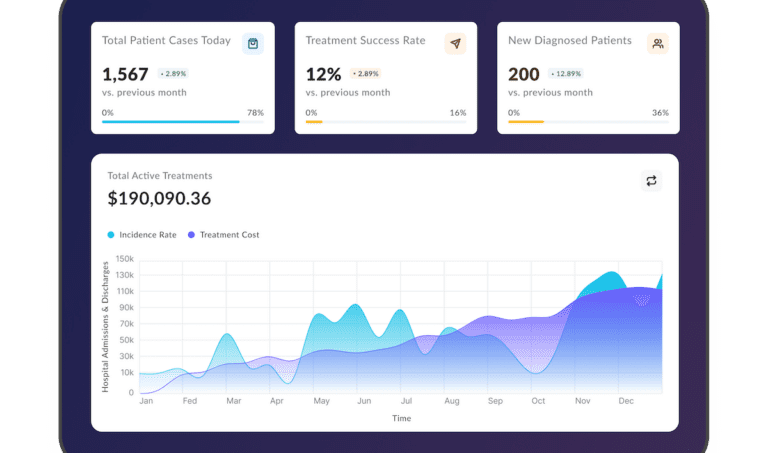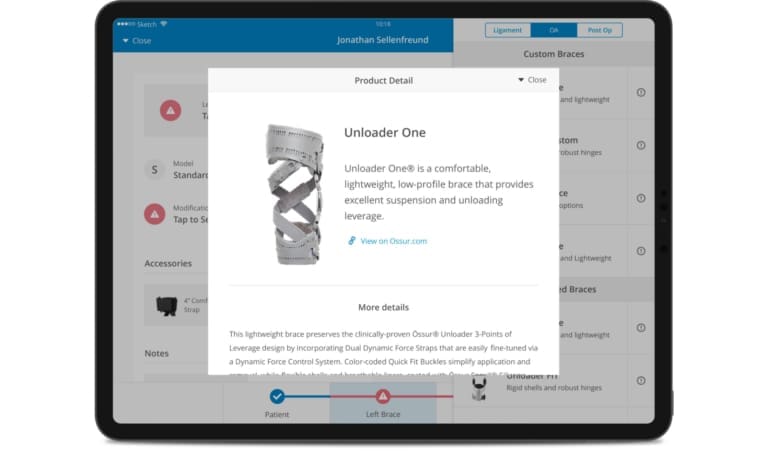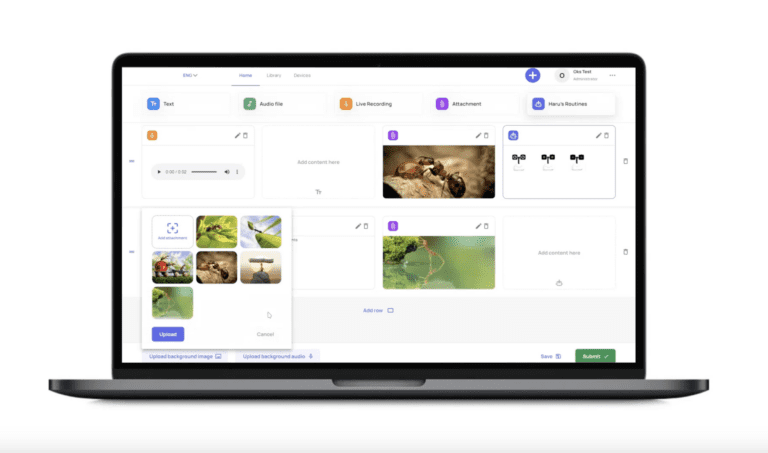Managing Remote Development Team in 2025: Best Practices and Tips for Success
Updated: June 4, 2025
Many businesses are expanding their operations internationally, with nearly half (44%) reporting an increasing number of full-time employees working remotely from different countries. This trend resonates particularly with IT services, which are often outsourced due to the scarcity of top-notch talent in Western markets.
It is true that the remote software development model brings many advantages, from cost-effectiveness to a performance boost. However, remote engineers call for a slightly different approach, tools, and management than in-house teams to succeed.

We provide companies with senior tech talent and product development expertise to build world-class software. Let's talk about how we can help you.
Contact usAre you curious about the differences? Do you want to understand them better? If so, then keep reading! With ten years of experience as an outsourcing development company, we’re ready to share our hard-earned knowledge with you. In this article, you’ll learn the best practices for managing remote teams to incorporate into your outsourcing journey.

We provide companies with senior tech talent and product development expertise to build world-class software. Let's talk about how we can help you.
Contact usTable of Contents
The Growing Influence of Remote Work on Software Development
In the dynamic tech world, access to a diverse talent pool is paramount for companies looking to thrive. Rapid technological advancements, the push toward digitalization, and the need to keep up with ever-changing software solutions have fueled the demand for remote developers. Fortunately, in a world without borders, these valuable technical talents are readily available for several reasons.
Technological Advancements
The widespread availability of high-speed Internet and the advent of state-of-the-art communication and collaboration tools have made remote work a breeze for software developers. They have paved the way for seamless communication, collaboration, and project management among team members, no matter where they are. Moreover, cloud-based development environments and platforms have empowered developers to access resources and tools from any corner of the globe at any given time.
The Workforce Globalization
As businesses spread their wings and expand their global presence, the demand for a diverse workforce has surged. Remote work enables companies to cast their net far and wide, tapping into a vast talent pool and fostering more innovative solutions and increased competitiveness. That creates countless opportunities for software developers to collaborate with international clients and remote software development teams, exposing them to different cultures and cutting-edge technologies.

The Pursuit of Flexibility
The software development industry has long been a poster child for flexible work arrangements, with numerous developers opting for freelance or contract-based gigs. Consequently, the shift to remote work has been relatively smooth sailing for the industry. Remote work offers employees an improved work-life balance, providing them with the opportunity to spend more time with their loved ones and pursue personal interests. On the other hand, employers benefit from the ability to attract top-notch talent from across the globe, not limited by geographical constraints.
Cost Savings
Remote work opens the door to cost-saving opportunities for both employers and employees. Companies can save a lot on office space, utilities, and other overhead expenses, while employees can cut down on transportation, wardrobe, and food costs. Furthermore, remote work allows software developers to reside in more affordable areas, liberating them from the burden of high living costs near their employer’s office.
Increased Productivity
Many software developers have reported a spike in productivity when working remotely. The luxury of working in a tailor-made, serene environment, free from distractions and office politics, can do wonders for focus and efficiency. Additionally, remote workers often enjoy a heightened sense of autonomy, leading to soaring job satisfaction and motivation.
To give some perspective on the rise of remote work in the software industry, it’s worth noting that software developers rank among the top five most common remote jobs worldwide. In fact, a staggering 57% of the IT industry in the United States is now remote. According to a survey conducted by Intuition, 78% of 669 CEOs believe that remote collaboration should be considered a long-term business strategy. In its turn, GitLab discovered that approximately 82% of participants envision remote work as the future landscape of the workforce.
With these convincing statistics data, one key question arises: how to manage remote developers?
Tips for Managing Remote Software Engineering Teams
It is likely that you also acknowledge the benefits of remote hiring and are eager to explore this trend. However, it’s essential to note that managing a remote software development team can be quite challenging. To help you achieve this, we have compiled a list of tried-and-true on how to effectively manage your remote team. Let’s go look!

Implementing Effective Onboarding Processes
Onboarding remote employees involves a multi-step process to transform promising candidates into top-performing team members. But remote onboarding differs from in-house onboarding, requiring more detailed documentation and clear processes to overcome distance challenges. Here are the key steps for effective remote employee onboarding:
- Start early to save time: By starting early and arranging necessary access, sharing documents, and completing administrative tasks before the new employees start working, you can save time and ensure a seamless onboarding process. Outsourcing providers can handle these tasks for you, saving you time and resources.
- Prepare your existing team: When integrating remote specialists, redistribute processes, implement collaboration tools, and introduce team-building activities to facilitate a smooth onboarding experience.
- Ask for feedback and be attentive: Monitor your remote team’s experience and gather feedback through one-to-one meetings or anonymous surveys. Use this information to improve onboarding and collaboration.
Leveraging Agile Project Management Techniques
Adopting agile methodologies and project management tools can enhance flexibility, collaboration, and productivity in remote software engineering teams. These practices allow teams to manage their work and adapt to changes effectively. Here are some tips for leveraging agile project management techniques:

- Organize and conduct virtual stand-ups and sprint meetings: Regular virtual stand-up meetings help maintain communication and ensure everyone is aligned with the team’s goals. Sprint meetings, such as planning, review, and retrospective sessions, enable the team to improve and adapt to changing requirements continuously.
- Utilize project management tools: Tools like Jira, Asana, Trello, and Google Meet allow agile development remote teams to track progress, manage tasks, and collaborate more efficiently. These tools provide a centralized platform for managing work items, timelines, and priorities, enabling teams to stay organized and focused.
- Foster a culture of continuous improvement: Encourage team members to reflect on their performance and identify areas for improvement regularly. By conducting sprint retrospectives, teams can learn from their experiences, make necessary adjustments, and implement changes to optimize their processes.
- Emphasize collaboration and communication: Facilitate open communication channels to ensure team members can easily share ideas, discuss challenges, and provide feedback. Tools like Slack or Microsoft Teams can be used for real-time collaboration and discussion, while video conferencing platforms like Zoom or Google Meet allow for more interactive and engaging meetings.
Fostering Team Engagement and Motivation
Keeping remote software engineering teams engaged and motivated is essential for maintaining productivity and promoting a positive work environment. Here are some proven strategies to foster team engagement and motivation:

- Define clear goals and expectations: Set well-defined objectives and communicate them to the team to ensure everyone understands their role and responsibilities. This clarity helps team members stay focused and work towards common goals.
- Provide professional growth and development opportunities: Encourage team members to expand their skill sets by offering access to training, webinars, or workshops. Providing resources and opportunities for learning can boost motivation and job satisfaction.
- Recognize and reward team achievements: Acknowledge individual and team accomplishments to demonstrate appreciation for their hard work. Recognition can take various forms, such as public praise, performance-based bonuses, or promotions, and helps boost morale and motivation.
- Host virtual team-building events and activities: Strengthen team cohesion and build rapport among remote team members by organizing virtual events, such as game nights, online quizzes, or group brainstorming sessions. These activities can help create a more connected and engaged team, even when working remotely.
Building a Strong Team Spirit
Creating a strong team spirit is crucial for distributed teams to maintain productivity, collaboration, and motivation. Here are some strategies to build a cohesive and connected remote team:
- Hiring the right talent for your remote team: When recruiting, focus on candidates with not only the required technical skills but also strong remote work capabilities, such as effective communication, self-motivation, and time management. This ensures that your team members can excel in a remote work environment. If working with an outsourcing company, they will provide options, but the final choice is yours.
- Promote a culture of collaboration: Encourage open communication and teamwork by using collaboration tools and platforms, such as project management software, code-sharing platforms, and video conferencing apps. This enables team members to easily share ideas, discuss challenges, and support each other.
- Foster trust among team members: Build trust within the team by maintaining transparency and accountability. Share company updates, involve team members in decision-making processes, and ensure that everyone’s opinions are valued and considered.
Measuring and Monitoring Remote Team Performance
Effectively measuring and monitoring remote team performance is essential for maintaining productivity and ensuring the success of your software engineering projects. Here are some strategies to track performance and provide support:
- Establishing key performance indicators (KPIs): Define clear, measurable, and relevant KPIs tailored to your team’s goals and objectives. KPIs might include code quality, project delivery timelines, or the number of resolved issues. Regularly track and review these indicators to gauge team performance and identify areas for improvement.
- Implementing regular performance reviews: Conduct periodic performance evaluations to provide team members with feedback on their work and discuss opportunities for growth. Performance reviews can be held quarterly, semi-annually, or annually, depending on your organization’s preferences.
- Addressing underperformance: If a team member is not meeting expectations, address the issue proactively. Have an open and honest conversation with the individual to identify any underlying problems or challenges they may be facing. Work together to create an action plan to improve performance and provide the necessary support.
- Providing support and resources: Ensure team members can access the tools, resources, and support they need to succeed in their roles. This may include providing training materials, offering mentorship, or connecting them with experts within the organization.
- Manage time zone differences: Flexible time management is crucial for remote development teams. To maximize productivity, permit team members to work when it suits them rather than expecting around-the-clock availability. The focus should not be on working hours, but on completing tasks that require professional management skills.
Ensuring Data Security and Compliance in Remote Environments
Data security and compliance are critical concerns when managing remote software engineering teams. Implementing robust security measures and providing proper training can help protect sensitive information and maintain compliance with industry regulations. Below are some strategies to guarantee data security and compliance in remote work environments:
- Implementing robust data security protocols: Establish strong security policies that outline the procedures and requirements for handling sensitive data. This may include using secure communication channels, encrypting data transfers, implementing multi-factor authentication, and regularly updating and patching software.
- Training team members on security best practices: Educate your team on the importance of data security and provide them with guidelines on protecting sensitive information. Regular training sessions can help keep team members informed about the latest threats, best practices, and company policies.
- Utilizing secure collaboration tools: Choose collaboration and project management tools that prioritize security and offer features such as end-to-end encryption, access controls, and audit logs. These tools can help protect your dev team’s work and ensure compliance with data protection regulations.
- Monitoring and auditing remote access: Regularly review remote access logs and activities to detect any unauthorized access or suspicious behavior. Implement access controls to limit the amount of sensitive information remote team members can access based on their roles and responsibilities.
- Regularly updating software and systems: Keep all software, operating systems, and applications up-to-date to protect against known security vulnerabilities. Encourage team members to enable automatic updates and regularly check for the latest patches and security updates.
Managing a Remote Software Development Team: Summary
Managing a remote team may seem daunting, but it’s not so different from working with an in-house team. You can enhance the development progress by taking care of a few key aspects, such as proper scheduling, following established work procedures and cultivating strong team spirit.
Being genuinely involved sets an example for your team and helps form clear goals, ensuring everything goes according to plan. Additionally, providing immediate feedback on even the smallest project details can impact overall project speed and success.
If you’re searching to hire a dedicated remote development team, feel free to get in touch with us. Our developers have vast, remote work experience and are ready to promptly support you with your project!
FAQ
Our core services:
Do you want a price estimate for your project?
Do you know that we helped 200+ companies build web/mobile apps and scale dev teams?
Let's talk about your engineering needs.
Write to us











